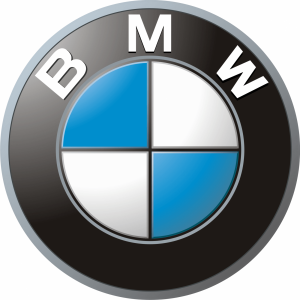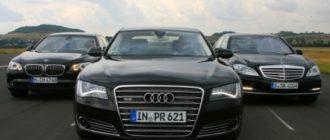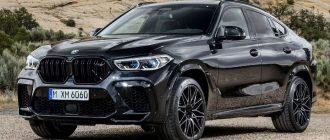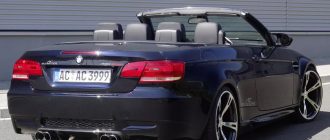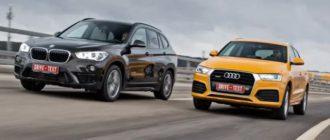- BMW 5 E34 in Detail
- Characteristics and Modifications of BMW 5 E34
- Interior Design of the Fifth Series in the E34 Body
- 520i
- Characteristics of the 520i
- Technical Features of the 518i
- 520i
- Characteristics of the 520i
- Technical Features of the 518i
- 520i
- Characteristics of the 520i
- Model Line of BMW 5 E34
- 5th Series on the BMW 518i Assembly Line
- Technical Features of the 518i
- 520i
- Characteristics of the 520i
- Model Line of BMW 5 E34
- 5th Series on the BMW 518i Assembly Line
- Technical Features of the 518i
- 520i
- Characteristics of the 520i
The BMW 5 Series E34 with a body type of E34 was manufactured and sold between 1988 and 1995. The BMW 5 E34 in the «Touring» body was produced tightly until 1996. This model replaced the fifth series in the E28 body back in 1988 and was later replaced by the E39 body.
The development of the E34 by BMW began as early as July 1981. By 1982, style specification preferences were noted. By mid-1985, the car had been fully developed, and in October 1987, it entered the production process.
The combination of BMW's classic rear-wheel drive and a straight-six engine under the hood allowed for the smoothest power transmission from the engine and optimal weight distribution.
The new 5 Series turned out to be much sleeker compared to its predecessor E28, maintaining its aggressive style but not as rounded as its competitors' cars.
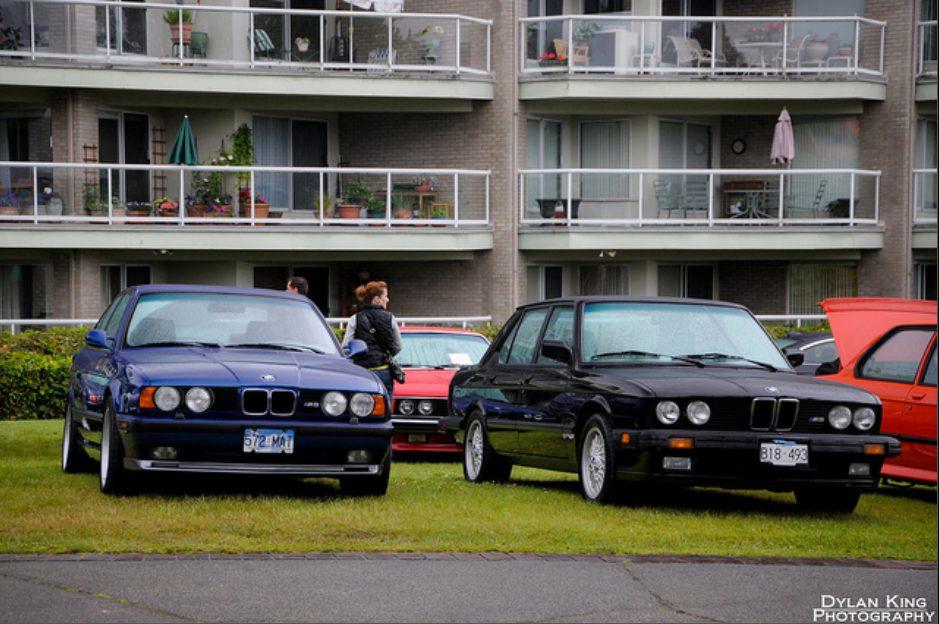
M5 in the E34 body (on the left) and its predecessor in the E28 body (on the right)
Overall, the style of the new 5 Series inherited the designs of artist Ercole Spada, who in 1986 depicted the modern design of the seventh series in the E32 body. Additionally, we owe thanks to J Mays for the design decisions in the E34. He, inspired by Ercole Spada's ideas from 1982—1983, embodied the final style of the E34, production of which was completed by 1985.
BMW 5 E34 in Detail
The BMW 5 Series E34 was the most successful luxury car of its time, receiving excellent ratings from Intellichoice in 1991 and still considered the most reliable car ever produced by BMW.
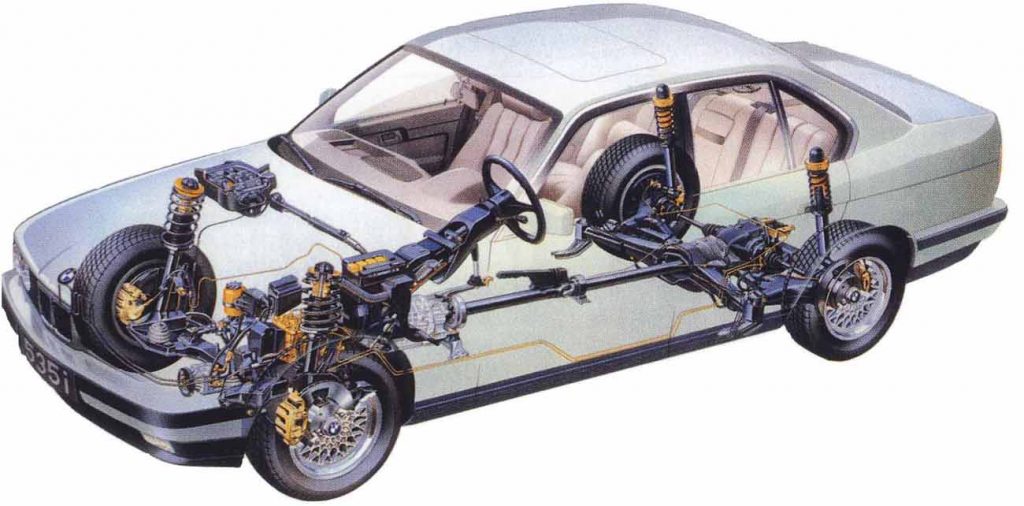
The new 5 Series was also the safest car, achieved through the use of airbags, ABS, and a rigid body structure that ensured passenger and driver safety in case of accidents.
Characteristics and Modifications of BMW 5 E34
Compared to its predecessor, the BMW 5 Series E28, which dates back to the late seventies, the BMW 5 E34 was a significant leap into the future. Apart from the technological advancements and increased standard and optional equipment, the new generation also saw a substantial improvement in the car's safety features.
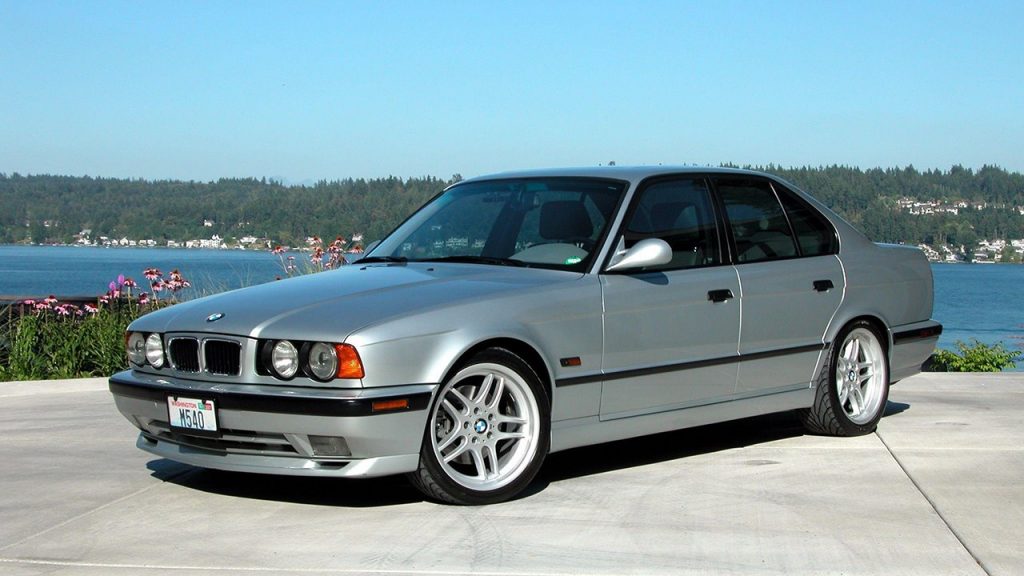
The chassis of the new 5 Series offered a perfect balance between comfort and handling, with larger engine variants providing dynamic performance, while smaller four-cylinder options catered to budget-conscious buyers with simpler exterior designs.
In high-end configurations, the driver's seat featured 5 electric adjustments, with seats from the M-Performance and M-Sport packages also including lateral support. Everything was designed to ensure a comfortable seating experience, especially in the front seats.
Interior Design of the Fifth Series in the E34 Body
| Model | Engine | Displacement | Max Power | Torque | Body | Production Period | Total Produced |
| 520i | M20B20 | 1991 cc | 129 HP (95 kW) at 6000 rpm | 164 Nm at 4300 rpm | Sedan | 1988—1990 | 427,122 |
| 520i 24V | M50B20 | 1991 cc | 150 HP (110 kW) at 5900 rpm | 190 Nm at 4700 rpm | Sedan/Touring | 1990—1992 | |
| 520i 24V Vanos | M50B20 TU | 1991 cc | 150 HP (110 kW) at 5900 rpm | 190 Nm at 4200 rpm | Sedan/Touring | 1992—1996 |
| 518i | M40B18 | 1796 cc | 113 HP (83 kW) at 5500 rpm | 162 Nm at 4250 rpm | Sedan/Touring | 1989—1994 | 53254 |
| 518i | M43B18 | 1796 cc | 115 HP (85 kW) at 5500 rpm | 168 Nm at 3900 rpm | Sedan/Touring | 1994—1996 | |
| 518g | M43B18 | 1796 cc | 105 HP (77 kW)/115 HP (85 kW) | 168 Nm at 3900 rpm | Touring | 1995—1996 | 298 |
520i
Previously, the 520i was equipped with a 129-hp M50B20 engine, criticized by car enthusiasts. In 1991, a new version with a 24-valve engine, the M50B20, was introduced, which was successfully installed in the third series in the E36 body. This engine upgrade increased the capacity of the 520i to 150 horsepower.
The 520i and 525i were initially powered by the M20 engines, which were later replaced by the M50 engine.
Characteristics of the 520i
| Model | Engine | Displacement | Max Power | Torque | Body | Production Period | Total Produced |
| 520i | M20B20 | 1991 cc | 129 HP (95 kW) at 6000 rpm | 164 Nm at 4300 rpm | Sedan | 1988—1990 | 427,122 |
| 520i 24V | M50B20 | 1991 cc | 150 HP (110 kW) at 5900 rpm | 190 Nm at 4700 rpm | Sedan/Touring | 1990—1992 | |
| 520i 24V Vanos | M50B20 TU | 1991 cc | 150 HP (110 kW) at 5900 rpm | 190 Nm at 4200 rpm | Sedan/Touring | 1992—1996 |
The M40B18 engine was used in the 518i from 1999 to 1994.
The 518i was available in both sedan and touring body types, with leather upholstery, alloy wheels, and digital clocks as part of its features.
The 518i accelerated from 0 to 100 kilometers per hour in just under fourteen seconds, with a top speed of 118 miles per hour.
Technical Features of the 518i
| 518i | M40B18 | 1796 cc | 113 HP (83 kW) at 5500 rpm | 162 Nm at 4250 rpm | Sedan/Touring | 1989—1994 | 53254 |
| 518i | M43B18 | 1796 cc | 115 HP (85 kW) at 5500 rpm | 168 Nm at 3900 rpm | Sedan/Touring | 1994—1996 | |
| 518g | M43B18 | 1796 cc | 105 HP (77 kW)/115 HP (85 kW) | 168 Nm at 3900 rpm | Touring | 1995—1996 | 298 |
520i
Previously, the 520i was equipped with a 129-hp M50B20 engine, criticized by car enthusiasts. In 1991, a new version with a 24-valve engine, the M50B20, was introduced, which was successfully installed in the third series in the E36 body. This engine upgrade increased the capacity of the 520i to 150 horsepower.
The 520i and 525i were initially powered by the M20 engines, which were later replaced by the M50 engine.
Characteristics of the 520i
| Model | Engine | Displacement | Max Power | Torque | Body | Production Period | Total Produced |
| 520i | M20B20 | 1991 cc | 129 HP (95 kW) at 6000 rpm | 164 Nm at 4300 rpm | Sedan | 1988—1990 | 427,122 |
| 520i 24V | M50B20 | 1991 cc | 150 HP (110 kW) at 5900 rpm | 190 Nm at 4700 rpm | Sedan/Touring | 1990—1992 | |
| 520i 24V Vanos | M50B20 TU | 1991 cc | 150 HP (110 kW) at 5900 rpm | 190 Nm at 4200 rpm | Sedan/Touring | 1992—1996 |
The M40B18 engine was used in the 518i from 1999 to 1994.
The 518i was available in both sedan and touring body types, with leather upholstery, alloy wheels, and digital clocks as part of its features.
The 518i accelerated from 0 to 100 kilometers per hour in just under fourteen seconds, with a top speed of 118 miles per hour.
Technical Features of the 518i
| 518i | M40B18 | 1796 cc | 113 HP (83 kW) at 5500 rpm | 162 Nm at 4250 rpm | Sedan/Touring | 1989—1994 | 53254 |
| 518i | M43B18 | 1796 cc | 115 HP (85 kW) at 5500 rpm | 168 Nm at 3900 rpm | Sedan/Touring | 1994—1996 | |
| 518g | M43B18 | 1796 cc | 105 HP (77 kW)/115 HP (85 kW) | 168 Nm at 3900 rpm | Touring | 1995—1996 | 298 |
520i
Previously, the 520i was equipped with a 129-hp M50B20 engine, criticized by car enthusiasts. In 1991, a new version with a 24-valve engine, the M50B20, was introduced, which was successfully installed in the third series in the E36 body. This engine upgrade increased the capacity of the 520i to 150 horsepower.
The 520i and 525i were initially powered by the M20 engines, which were later replaced by the M50 engine.
Characteristics of the 520i
| Model | Engine | Displacement | Max Power | Torque | Body | Production Period | Total Produced |
| 520i | M20B20 | 1991 cc | 129 HP (95 kW) at 6000 rpm | 164 Nm at 4300 rpm | Sedan | 1988—1990 | 427,122 |
| 520i 24V | M50B20 | 1991 cc | 150 HP (110 kW) at 5900 rpm | 190 Nm at 4700 rpm | Sedan/Touring | 1990—1992 | |
| 520i 24V Vanos | M50B20 TU | 1991 cc | 150 HP (110 kW) at 5900 rpm | 190 Nm at 4200 rpm | Sedan/Touring | 1992—1996 |
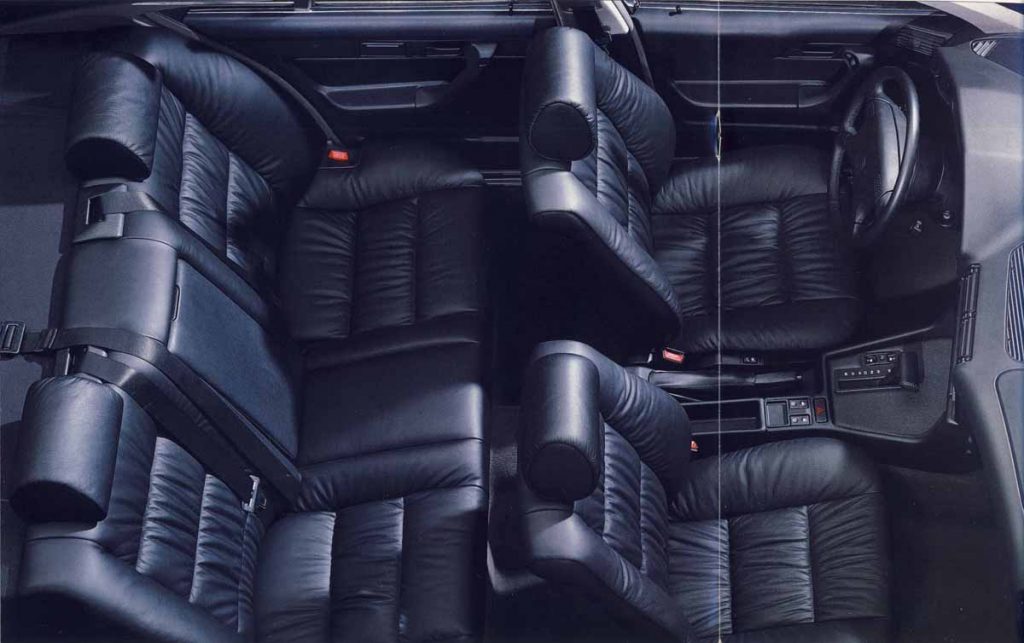
The BMW 5 Series offered a wide range of robust inline six-cylinder petrol engines with Bosch-Motronic fuel injection, making it a standout choice in the luxury car segment of its time.
Model Line of BMW 5 E34
The European market had a wider range of engines available for the latest 5 Series compared to the North American market. While the US received models like 525i, 525i Touring, 535i, 530i, 530i Touring, 540i, and M5, European consumers also had access to lower-end options like 518i and 520i, the six-cylinder 530i, 525td/s, 525ix, M5, and 540i Touring.
In Europe, the sales of the new 5 Series started earlier than in the US.
5th Series on the BMW 518i Assembly Line
The BMW 518i was initially powered by an eight-valve four-cylinder SOHC engine, the M40B18 with a capacity of 1.8 liters. It was only available with a five-speed automatic transmission from Getrag and positioned as a budget-friendly car priced lower than the Mercedes-Benz C-Class and Audi 4000.
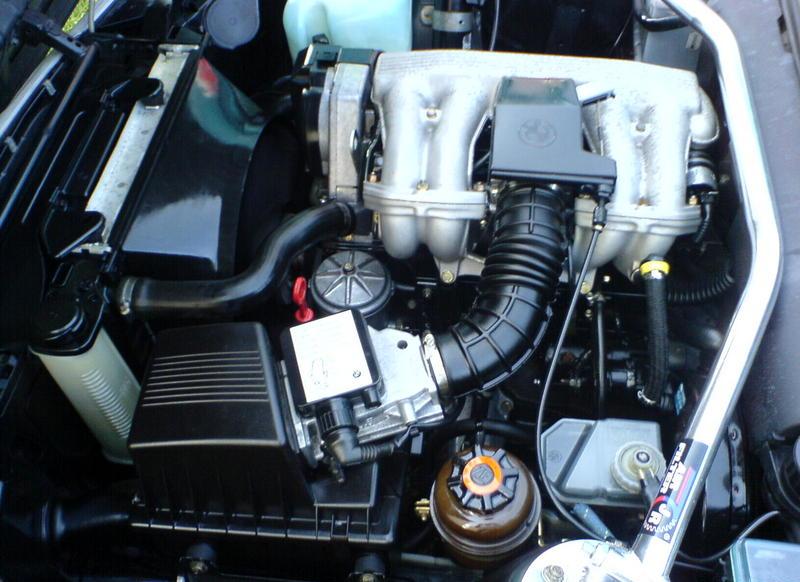


The M40B18 engine was used in the 518i from 1999 to 1994.
The 518i was available in both sedan and touring body types, with leather upholstery, alloy wheels, and digital clocks as part of its features.
The 518i accelerated from 0 to 100 kilometers per hour in just under fourteen seconds, with a top speed of 118 miles per hour.
Technical Features of the 518i
| 518i | M40B18 | 1796 cc | 113 HP (83 kW) at 5500 rpm | 162 Nm at 4250 rpm | Sedan/Touring | 1989—1994 | 53254 |
| 518i | M43B18 | 1796 cc | 115 HP (85 kW) at 5500 rpm | 168 Nm at 3900 rpm | Sedan/Touring | 1994—1996 | |
| 518g | M43B18 | 1796 cc | 105 HP (77 kW)/115 HP (85 kW) | 168 Nm at 3900 rpm | Touring | 1995—1996 | 298 |
520i
Previously, the 520i was equipped with a 129-hp M50B20 engine, criticized by car enthusiasts. In 1991, a new version with a 24-valve engine, the M50B20, was introduced, which was successfully installed in the third series in the E36 body. This engine upgrade increased the capacity of the 520i to 150 horsepower.
The 520i and 525i were initially powered by the M20 engines, which were later replaced by the M50 engine.
Characteristics of the 520i
| Model | Engine | Displacement | Max Power | Torque | Body | Production Period | Total Produced |
| 520i | M20B20 | 1991 cc | 129 HP (95 kW) at 6000 rpm | 164 Nm at 4300 rpm | Sedan | 1988—1990 | 427,122 |
| 520i 24V | M50B20 | 1991 cc | 150 HP (110 kW) at 5900 rpm | 190 Nm at 4700 rpm | Sedan/Touring | 1990—1992 | |
| 520i 24V Vanos | M50B20 TU | 1991 cc | 150 HP (110 kW) at 5900 rpm | 190 Nm at 4200 rpm | Sedan/Touring | 1992—1996 |
The suspension of the BMW 5 E34 was not overly soft, but it offered excellent comfort. The model also boasted top-level sound insulation, and although rear visibility was good, there were concerns in reverse.
The trunk lid housed a well-stocked set of instruments. Apart from the Bosch ABS and driver airbags, most other additions were functional.
Features like Servotronic for power steering ensured optimal control at varying speeds, while the braking system provided strong deceleration and precise feedback. The ABS functioned smoothly and effectively.



The BMW 5 Series offered a wide range of robust inline six-cylinder petrol engines with Bosch-Motronic fuel injection, making it a standout choice in the luxury car segment of its time.
Model Line of BMW 5 E34
The European market had a wider range of engines available for the latest 5 Series compared to the North American market. While the US received models like 525i, 525i Touring, 535i, 530i, 530i Touring, 540i, and M5, European consumers also had access to lower-end options like 518i and 520i, the six-cylinder 530i, 525td/s, 525ix, M5, and 540i Touring.
In Europe, the sales of the new 5 Series started earlier than in the US.
5th Series on the BMW 518i Assembly Line
The BMW 518i was initially powered by an eight-valve four-cylinder SOHC engine, the M40B18 with a capacity of 1.8 liters. It was only available with a five-speed automatic transmission from Getrag and positioned as a budget-friendly car priced lower than the Mercedes-Benz C-Class and Audi 4000.



The M40B18 engine was used in the 518i from 1999 to 1994.
The 518i was available in both sedan and touring body types, with leather upholstery, alloy wheels, and digital clocks as part of its features.
The 518i accelerated from 0 to 100 kilometers per hour in just under fourteen seconds, with a top speed of 118 miles per hour.
Technical Features of the 518i
| 518i | M40B18 | 1796 cc | 113 HP (83 kW) at 5500 rpm | 162 Nm at 4250 rpm | Sedan/Touring | 1989—1994 | 53254 |
| 518i | M43B18 | 1796 cc | 115 HP (85 kW) at 5500 rpm | 168 Nm at 3900 rpm | Sedan/Touring | 1994—1996 | |
| 518g | M43B18 | 1796 cc | 105 HP (77 kW)/115 HP (85 kW) | 168 Nm at 3900 rpm | Touring | 1995—1996 | 298 |
520i
Previously, the 520i was equipped with a 129-hp M50B20 engine, criticized by car enthusiasts. In 1991, a new version with a 24-valve engine, the M50B20, was introduced, which was successfully installed in the third series in the E36 body. This engine upgrade increased the capacity of the 520i to 150 horsepower.
The 520i and 525i were initially powered by the M20 engines, which were later replaced by the M50 engine.
Characteristics of the 520i
| Model | Engine | Displacement | Max Power | Torque | Body | Production Period | Total Produced |
| 520i | M20B20 | 1991 cc | 129 HP (95 kW) at 6000 rpm | 164 Nm at 4300 rpm | Sedan | 1988—1990 | 427,122 |
| 520i 24V | M50B20 | 1991 cc | 150 HP (110 kW) at 5900 rpm | 190 Nm at 4700 rpm | Sedan/Touring | 1990—1992 | |
| 520i 24V Vanos | M50B20 TU | 1991 cc | 150 HP (110 kW) at 5900 rpm | 190 Nm at 4200 rpm | Sedan/Touring | 1992—1996 |
